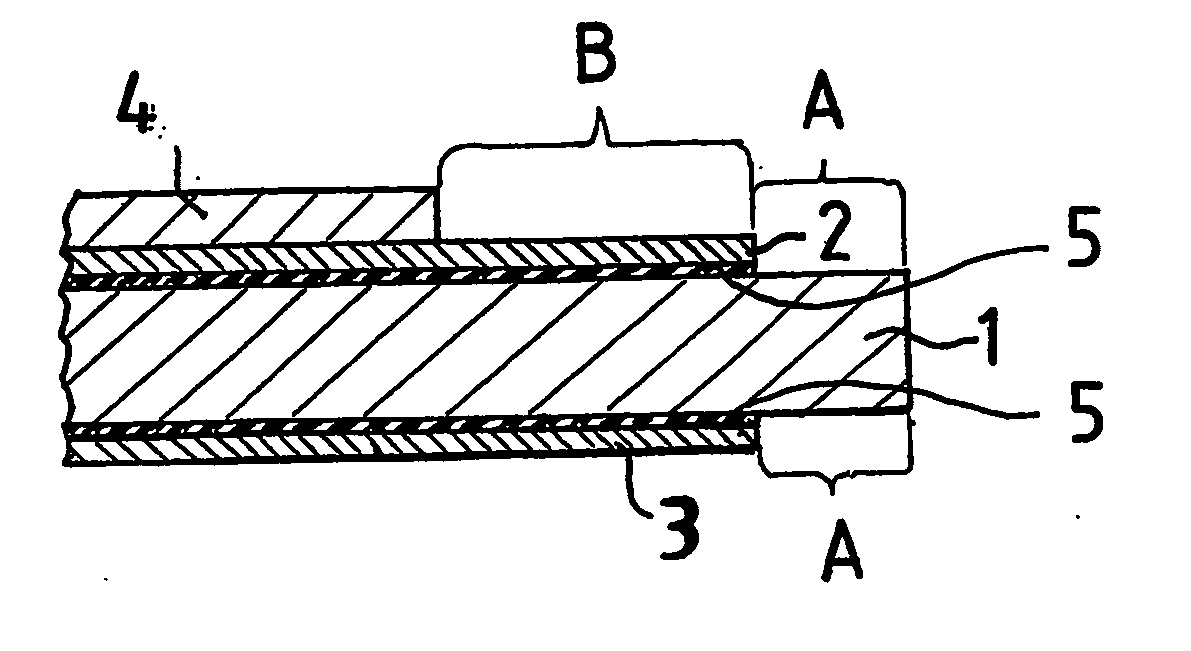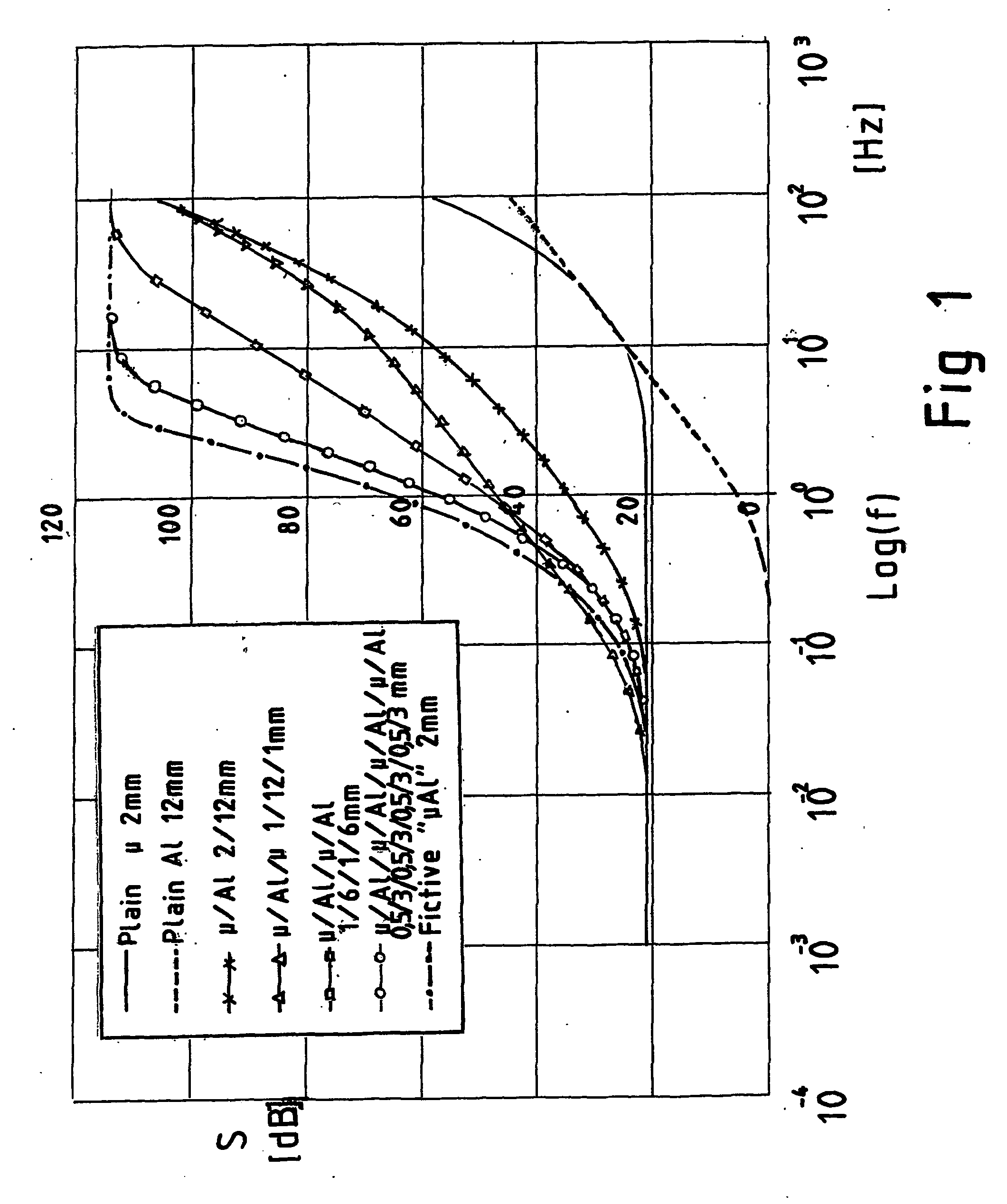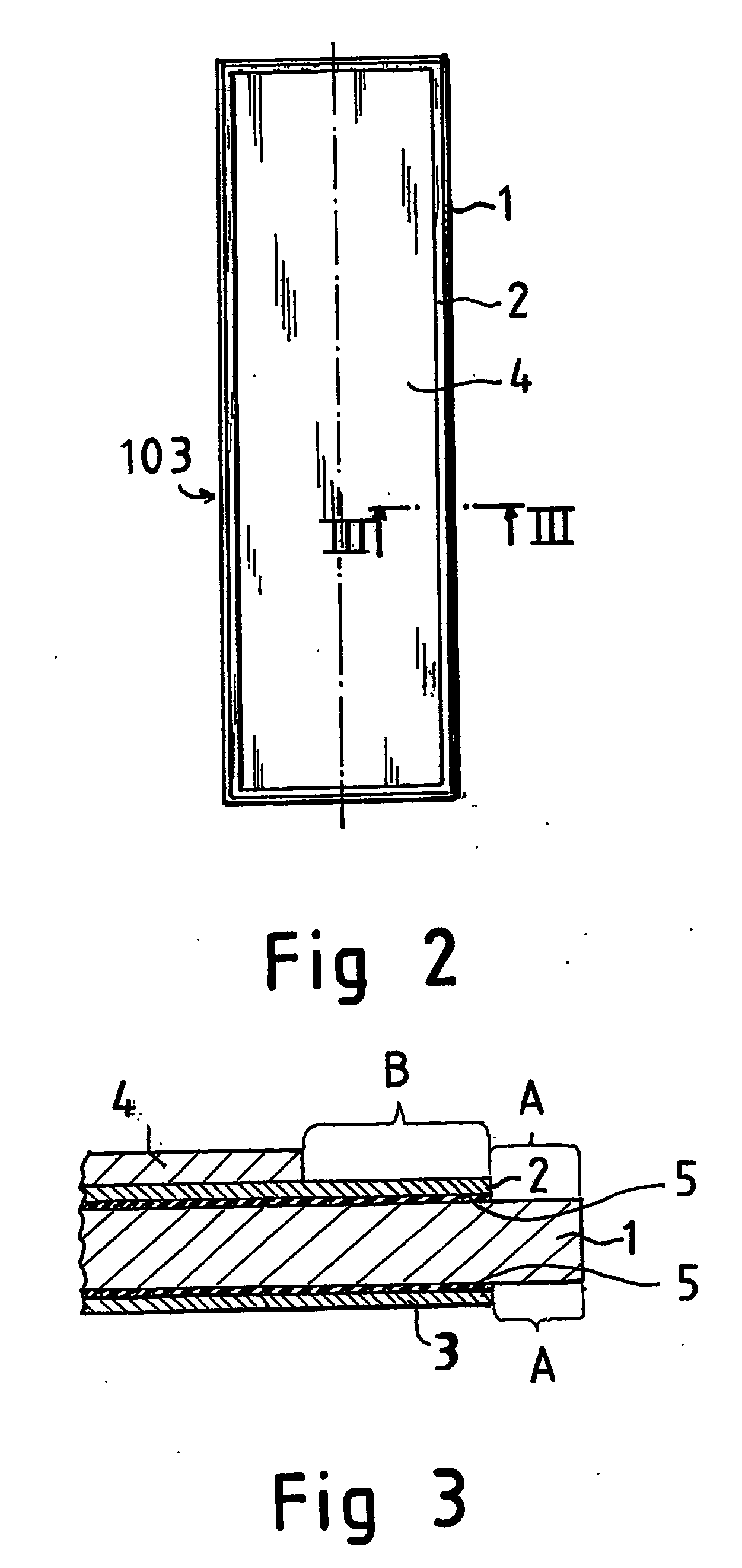Wall element for magnetically shielded room and magnetically shielded room
a wall element and magnetic shielding technology, applied in the field of wall elements, can solve the problems of limited active compensation degree, induced field counterbalancing, limited active shielding efficiency, etc., and achieve the effect of improving shielding, boosting shielding, and strengthening the “-aluminum”
- Summary
- Abstract
- Description
- Claims
- Application Information
AI Technical Summary
Benefits of technology
Problems solved by technology
Method used
Image
Examples
Embodiment Construction
[0073] The composite magnetic shield according to the present invention works as indicated in FIG. 1 only if the magnetic and electric continuity is taken care of in each wall of the sandwich structure and in each one of its subshells. Assembling the wall elements from a very large number of separate sheets is laborious, and the thickness tolerances tend to prevent achieving the required electric and magnetic contact in the joints between the elements. For this reason, the extreme sandwich structure—made up of a very large number of thin metal sheets, and having the best shielding properties—is rather impractical.
[0074] Therefore, a simple four layer element as presented in FIGS. 2 and 3 is described by way of example as a preferred embodiment.
[0075] Referring to FIGS. 2 and 3, the wall element 103 consists of four rectangular metal plates mounted face-to-face by gluing or mechanically. The element comprises a first layer 1, which is a sheet of highly conductive metal, e.g. alumin...
PUM
| Property | Measurement | Unit |
|---|---|---|
| total thickness | aaaaa | aaaaa |
| total thickness | aaaaa | aaaaa |
| bend angle | aaaaa | aaaaa |
Abstract
Description
Claims
Application Information
 Login to View More
Login to View More - R&D
- Intellectual Property
- Life Sciences
- Materials
- Tech Scout
- Unparalleled Data Quality
- Higher Quality Content
- 60% Fewer Hallucinations
Browse by: Latest US Patents, China's latest patents, Technical Efficacy Thesaurus, Application Domain, Technology Topic, Popular Technical Reports.
© 2025 PatSnap. All rights reserved.Legal|Privacy policy|Modern Slavery Act Transparency Statement|Sitemap|About US| Contact US: help@patsnap.com



